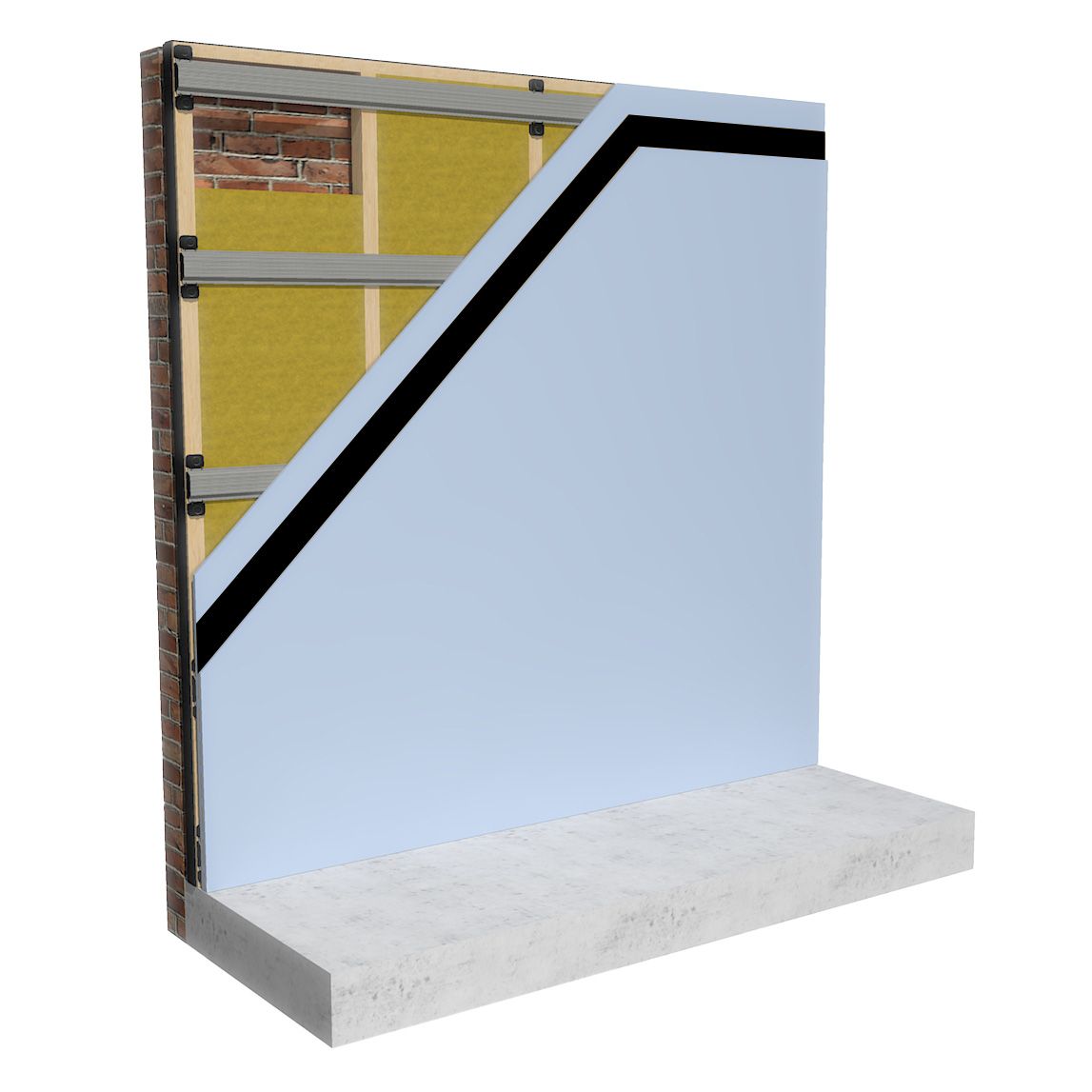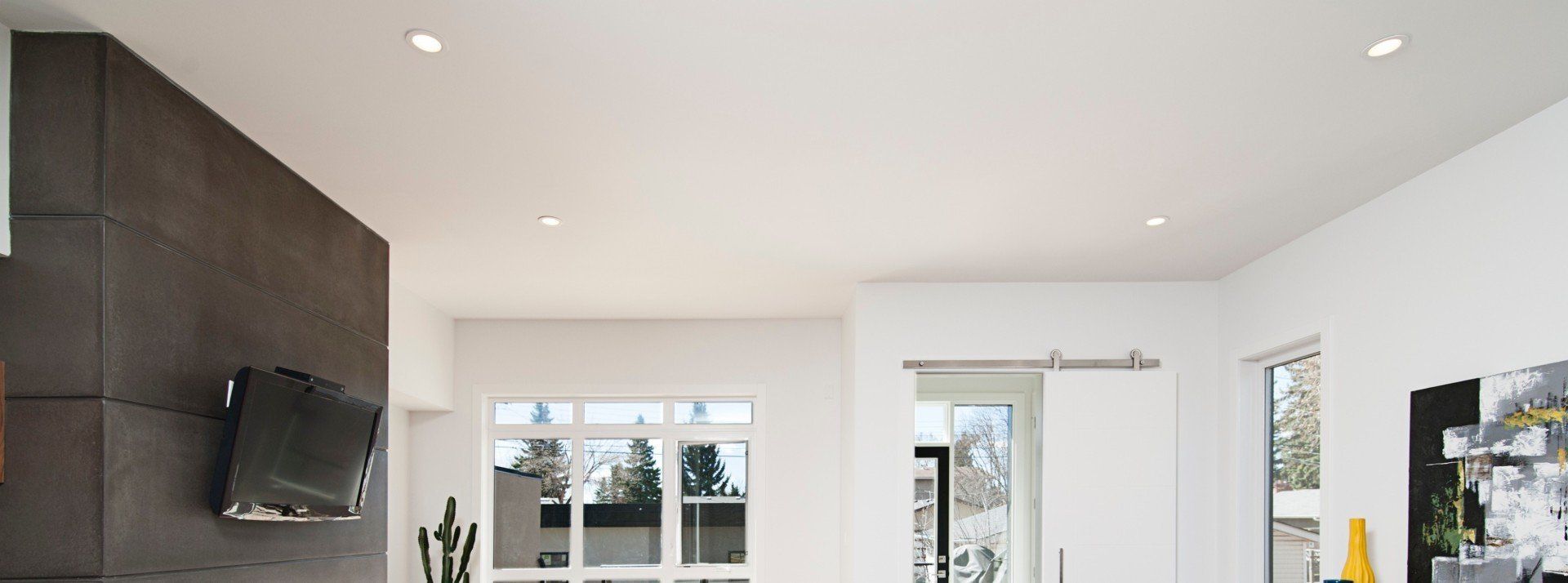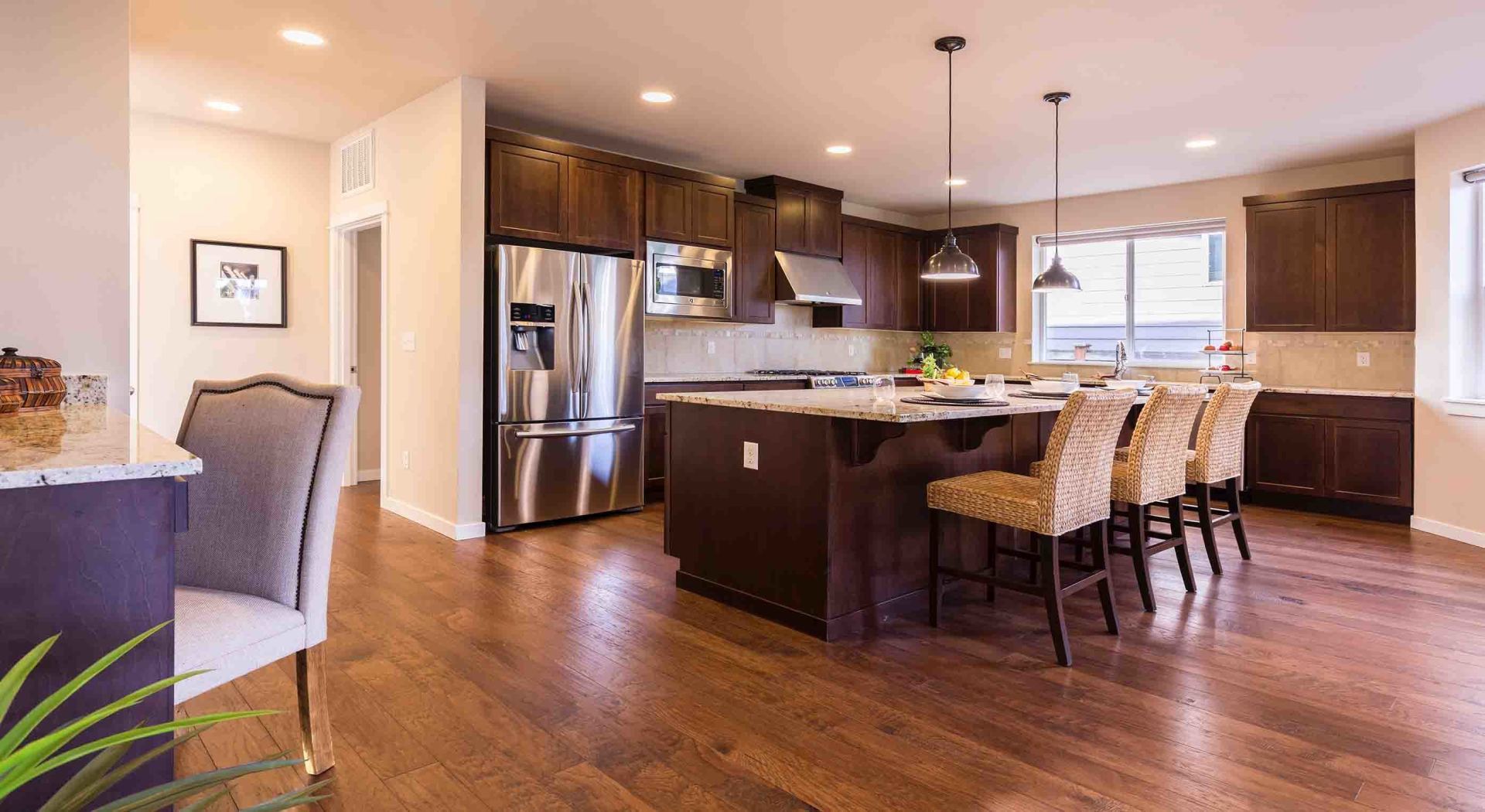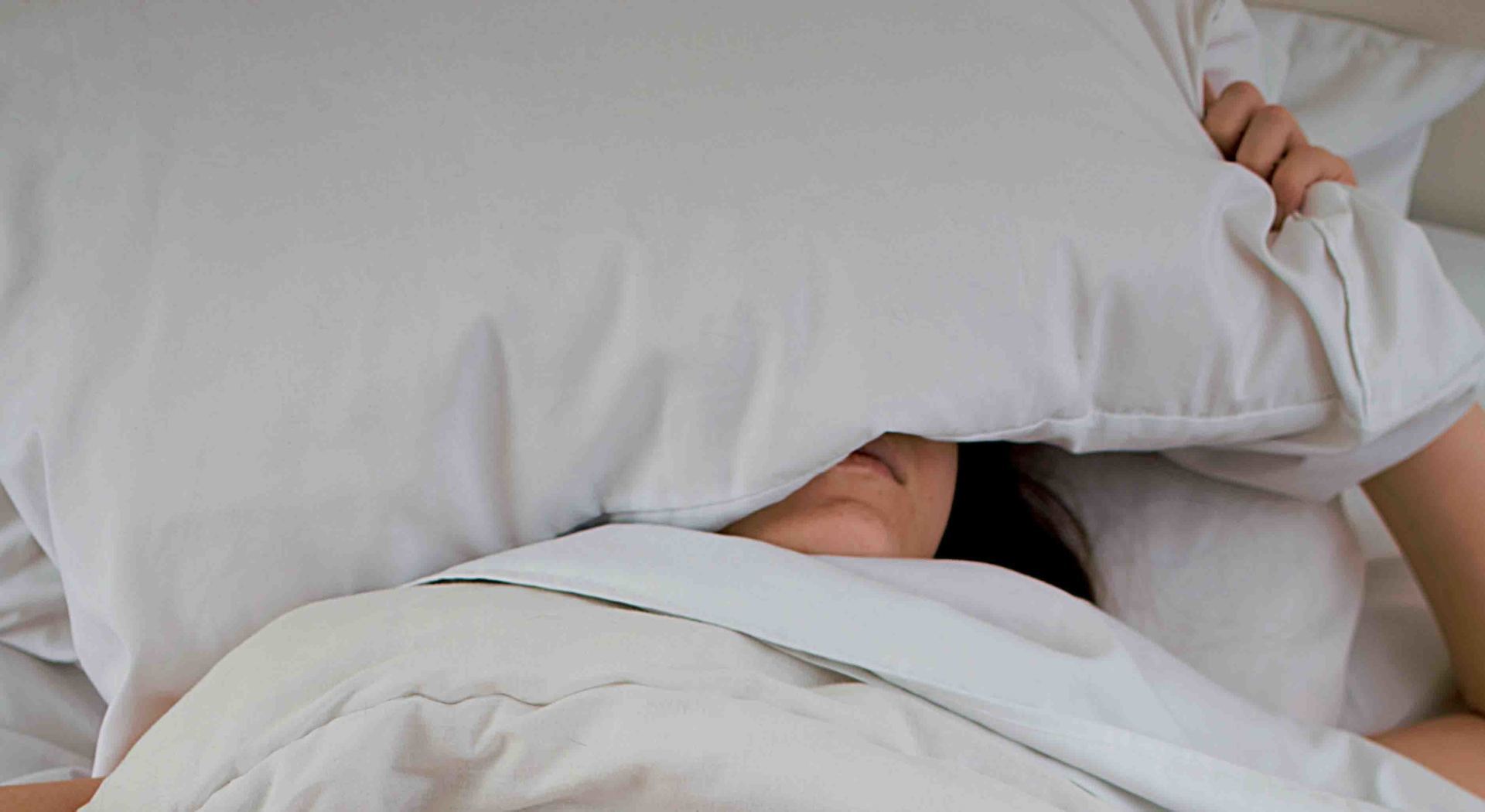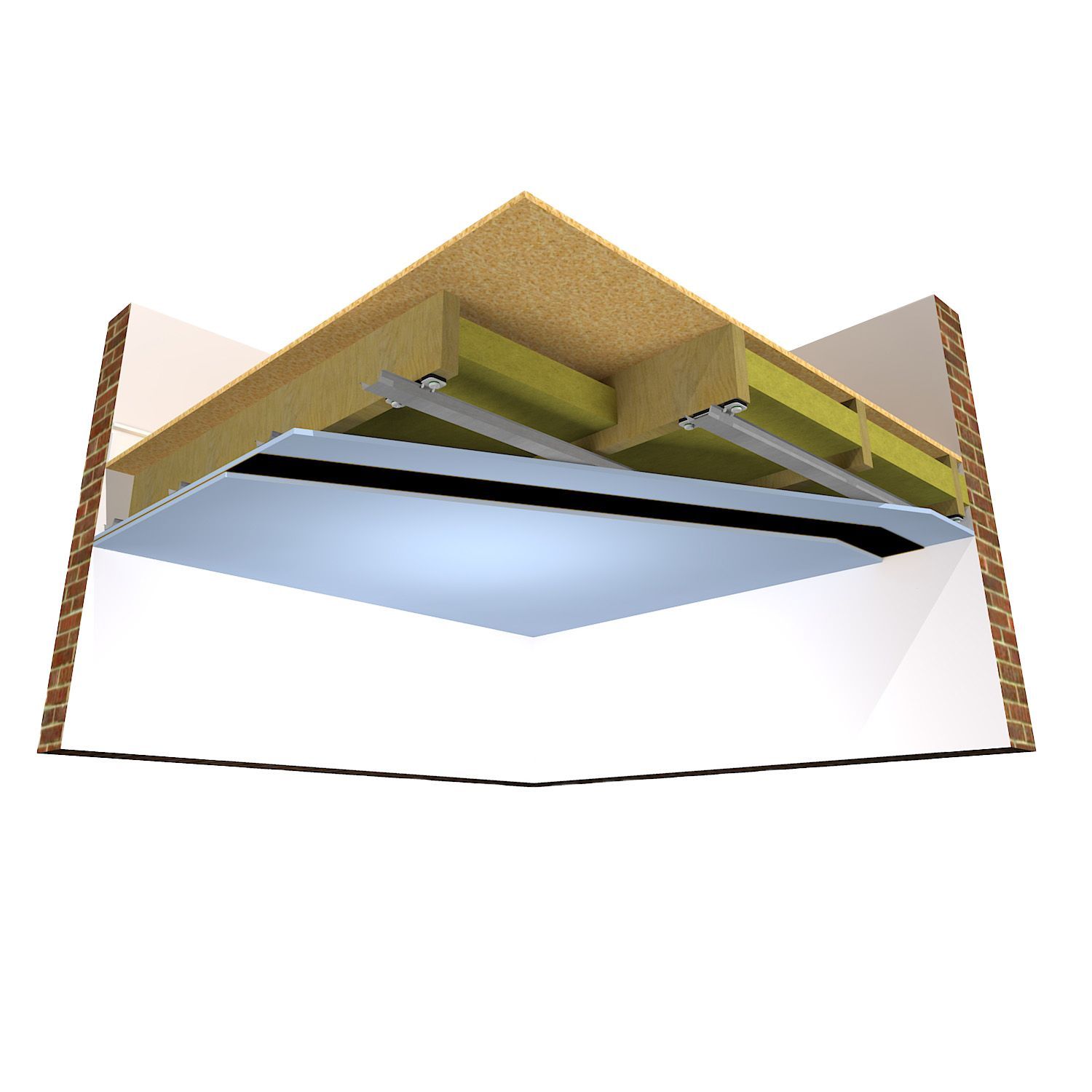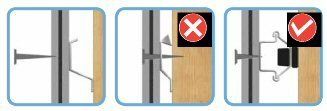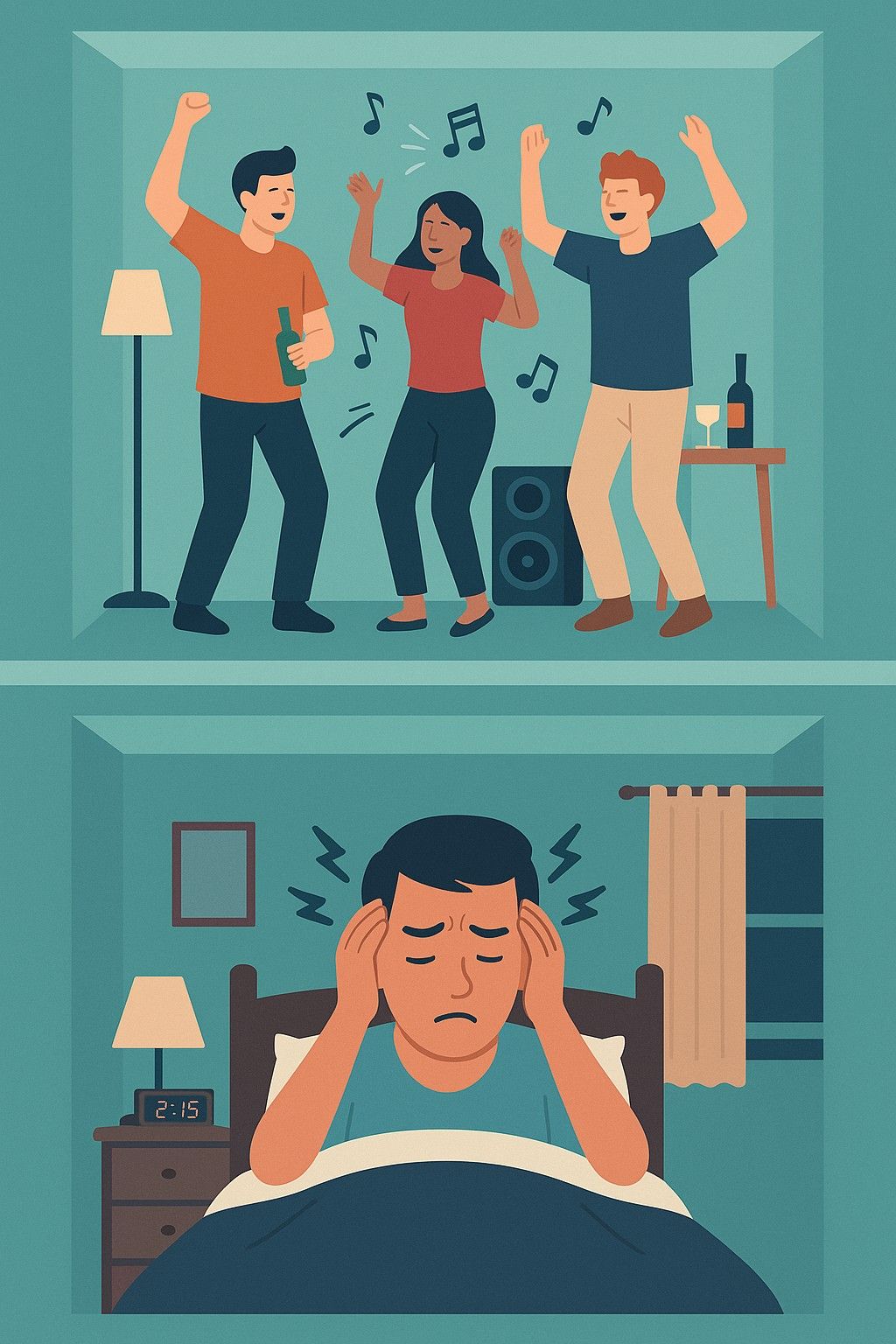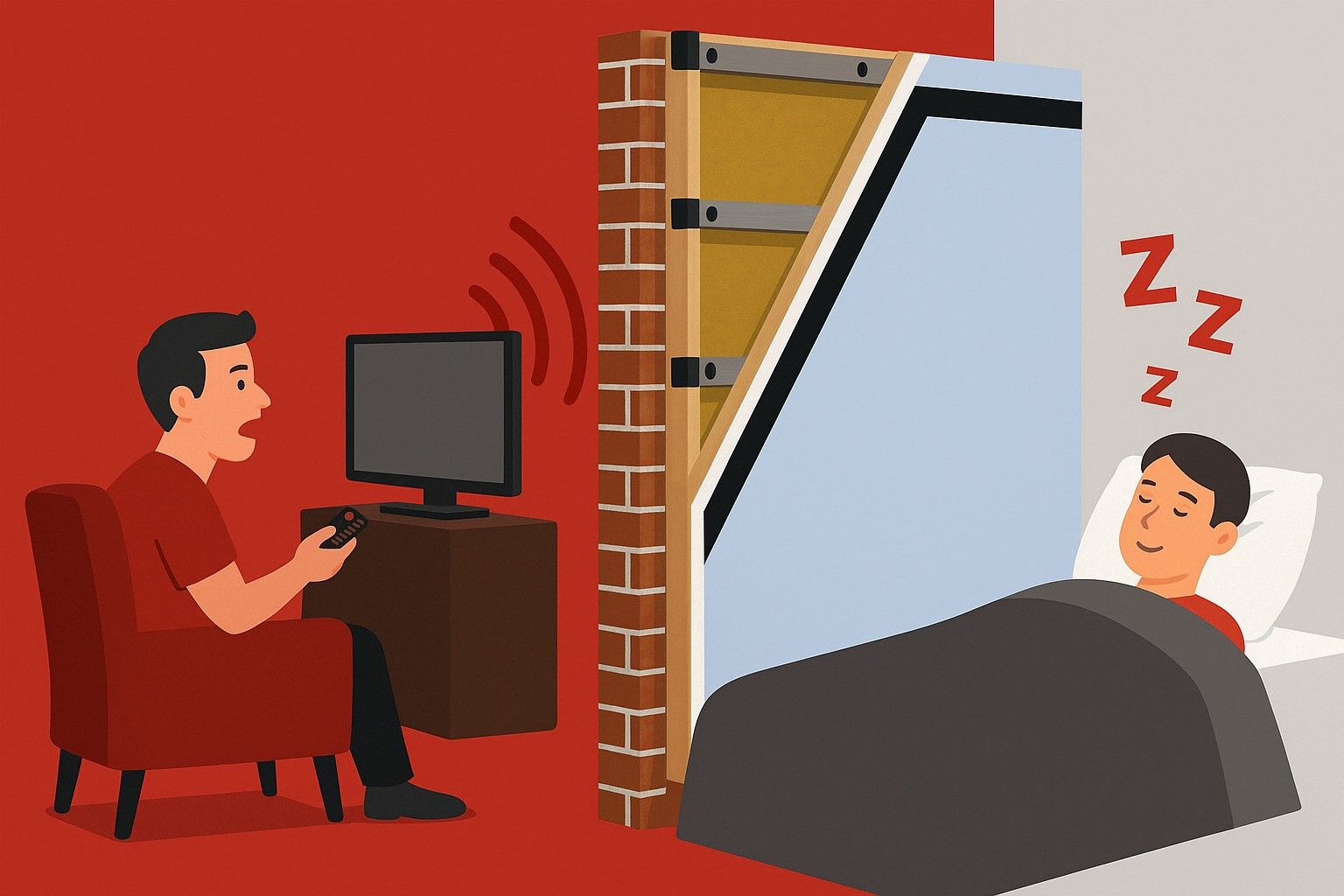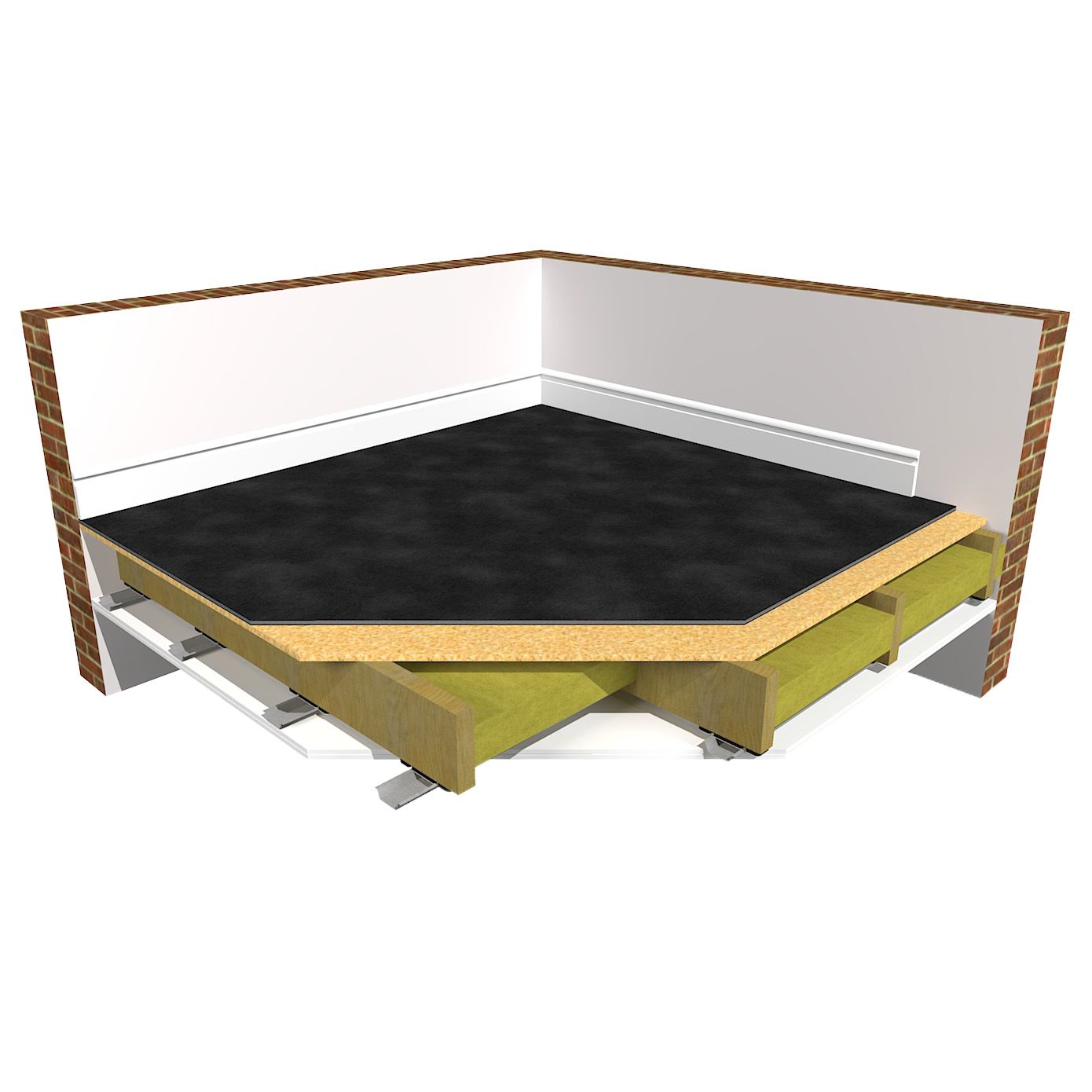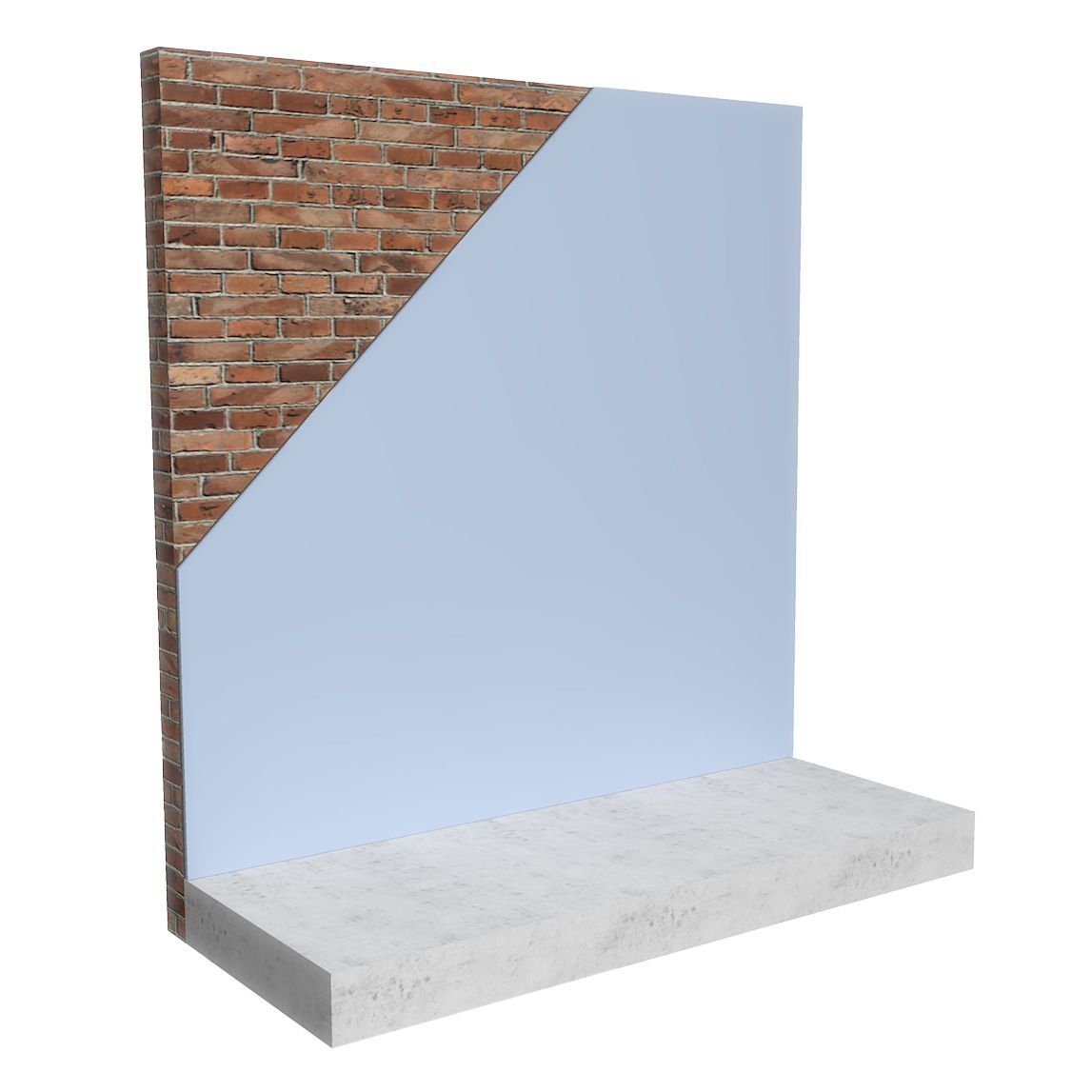How to soundproof a ceiling in a flat or apartment
Why soundproofing your ceiling is important in flats and shared occupancy buildings
If you're searching for how to soundproof a ceiling, whether you're in a flat, apartment, a property converted to accommodate multiple occupants, or a domestic home, you're not alone. With rising complaints of noise from upstairs neighbours, many people are looking for effective soundproofing ceilings in flats and soundproof insulation for ceilings. As reported by The Express a noise dispute between neighbours led to a £100,000 compensation claim due to "intolerable noise" coming from the family living above, highlighting just how serious poor ceiling sound insulation can be.
If you live in a flat or converted property, the best solution (if possible) is always to soundproof the floor above, with acoustic floor treatment like SoundMats, as this tackles impact noise at its source. However, if you don’t have access to the upstairs property, ceiling soundproofing becomes the next best option to block both airborne noise (like music and voices) and impact noise (like footsteps and furniture movement).
This guide covers everything you need to know about ceiling soundproofing, including the best methods and products for acoustic ceiling insulation, based on whether your ceiling is made of timber joists or concrete.
What is the best ceiling soundproofing solution?
The best ceiling soundproofing solution depends on two key factors:
1. The Type of Ceiling Construction (Timber Joist or Concrete)
The structure of your ceiling plays a critical role in how sound travels and how it can be blocked or absorbed. Timber joist ceilings tend to amplify both impact and airborne noise because they are low in mass and the cavities between the joists can create a drum-like resonance if left untreated.
Timber ceilings benefit greatly from a layered soundproofing approach involving vibration isolation (such as ReductoClips) dense sound-blocking boards, like acoustic plasterboard and high mass acoustic membrane FlexiSound which dampens sound energy and vibrations, whilst also adding further mass. Adding acoustic mineral wool between the joists to dampen sound within the cavity is also important.
Concrete ceilings, often found in high-rise buildings, are denser and therefore usually provide better sound insulation against airborne noise than timber. However, they can conduct vibration, meaning impact noise can easily transfer from above. Soundproofing solutions like the ReductoClip system with timber battens provides layers of mass and resilience to help dampen sound energy and vibration with minimal loss of ceiling height.
2. The Type of Noise You Are Trying to Reduce (Airborne or Impact Noise)
Different noise types require different soundproofing strategies:
- Impact Noise: Created by footsteps, dropped items, or furniture being moved. This noise travels through the structure of the building.
- Airborne Noise: Includes sounds like talking, TV audio, and music. This travels through the air and passes through gaps and lightweight materials.
ReductoClip Ceiling Soundproofing addresses both by combining high-mass materials to block airborne sound and decoupling to break the path of structural vibrations.
Key Questions Before Choosing a Ceiling Soundproofing System
- Is your ceiling made of timber joists or concrete?
- Is the noise from above or below?
- Is the noise impact, airborne, or both?
- How loud is the noise?
Soundproofing ceilings in flats
If you live in a flat and want to improve the soundproofing performance of your existing ceiling, one option (if you're Ed Sheeran) as reported in the
Metro Newspaper would be to simply buy the flat above! If you don't have £4 million to splash out on properties to limit noise problems with neighbours, then our advice would be to address these three key areas:
1.
Addition of mass (high density materials) added to the ceiling to block airborne noise.
This can be achieved by the addition of materials such as
Acoustic plasterboard
with FlexiSound 5.
Different types of mass block different sound frequencies better than others, so using a combination of differing high mass materials will give you a better result then adding more of the same.
2.
Vibration Dampening (high performing vibration isolation system) used to dampen the vibration and helping to stop it from travelling through the structure from above.
This can be achieved with isolation clips systems such as the
ReductoClip System
3.
Sound Absorption (reduction of sound echo / reverberation). To stop sound echoing and amplifying in any sealed chambers such as between timber joists (also known as the drum effect).
This can be counteracted by the addition of a high performing noise absorption material such as
Acoustic Mineral Wool.
How to soundproof a timber ceiling
ReductoClip Timber Ceiling System
The soundproofing capabilities of timber ceilings can easily be upgraded with the
ReductoClip Timber Ceiling System. The ReductoClip Ceiling System is a high performing sound reduction system, designed to completely isolate existing ceilings. This easy to install system can be applied directly to any flat surface and you only lose 60mm of space.
By attaching the ReductoClip to the timber joists, this system simply and easily secures the furring channel and decouples the new high mass ceiling layers from the structure. This system greatly reduces the transference of sound vibration energy. The addition of high mass layers also helps to block airborne noise.
On a standard construction this will exceed the building regulations requirements for
Part E. Tested on a timber joist structure with one layer of OSB directly fixed as a structural floor, performance figures of 64dB Airborne and 59dB Impact are achieved.
The ideal soundproofing solution for high levels of impact and airborne noise on timber joist ceilings.
Video: How to soundproof a timber ceiling with the ReductoClip System
The most effective way to soundproof a ceiling against noisy neighbours and unwanted impact and airborne noise from above is by using the ReductoClip Ceiling System.
This is an extremely high-performing acoustic ceiling system designed to decouple the new ceiling layers from the original structure, drastically reducing the transfer of sound energy. At just 60mm thick, it’s also the slimmest clip-and-bar soundproofing solution available, making it ideal where ceiling height is limited.
Watch the video below to see the step-by-step DIY installation process on a timber joist ceiling. Whether you live in a flat, apartment, or domestic home, this system is perfect for blocking noise from upstairs. It’s also widely used in high-performance spaces such as home cinemas and music studios.
How to Soundproof a Concrete Ceiling
In an ideal word you would build a new suspended frame just below the concrete ceiling and apply soundproofing as above. However, it's worth pointing out that this will mean a minimum loss of around 200mm of space.
As a general rule, most people do not have just under 8 inches of space to lose off the ceiling, which is why our standard specification is to use our higher performing
ReductoClip Ceiling System with timber battens, resulting in only 110mm loss of space.
This system will achieve an average of:
Airborne reduction of up to 74db on a concrete ceiling
Impact reduction of 48dB on a concrete ceiling
(Both of these figures exceed the new
Part E
Building Regulations for soundproofing)
Soundproofing a ceiling: Quick summary
1. Add Mass to Block Airborne Noise
Increase the density of your ceiling using high mass materials such as:
- Acoustic Plasterboard
- FlexiSound 5
Different types of mass block different sound frequencies, so using a combination of differing high mass materials will give you a better result then simply adding more of the same.
2. Dampen Vibrations
Use a vibration isolation system to break the path of sound travelling through the structure. Our recommended solution:
- ReductoClip System
This effective clip system isolates the ceiling and dramatically reduces structural vibration transfer.
3. For Timber Joist Ceilings Add Acoustic Insulation
To reduce echo and reverberation within sealed chambers and to prevent the "drum effect" (amplified noise in sealed voids), use:
- Acoustic Mineral Wool
Placed between joists, it absorbs sound energy and helps improve overall acoustic performance.
Resilient bars v's ReductoClips for ceiling soundproofing
We are also regularly asked about ceiling only soundproofing and traditional resilient bars. If you are soundproofing
both the floor and the ceiling, resilient bars can be a cost effective solution. However, for soundproofing a ceiling only, we wouldn't recommend traditional resilient bars. In our experience, up to 40% are fitted incorrectly, with screws penetrating through the bar and into the timber joists (see below image). Essentially making them totally ineffective, as they no longer decouple the noise.
The ReductoClip system offers up to a 10dB improvement over resilient bars (another halving of the noise) and can't be damaged during the fitting.
How much does it cost to soundproof a ceiling?
Many people assume that soundproofing a ceiling is costly, but in reality, it’s more affordable than you might think. For an average ceiling size of 5m x 4m, the material cost for a complete ReductoClip timber ceiling soundproofing system is typically under £1,900 (excluding VAT and installation costs). This makes it a cost-effective solution for achieving professional-level acoustic insulation and reducing both impact and airborne noise from above.
Compared to the disruption and stress caused by noisy neighbours, and in some cases, even forcing people to move home, investing in soundproof insulation for ceilings is a smart, long-term solution.
The ReductoClip system can be installed by a professional or a competent DIYer, making it accessible for homeowners seeking high performing ceiling soundproofing.
Final Thoughts on Soundproofing Ceilings
Effective ceiling soundproofing in flats, residential properties and domestic homes requires a strategic combination of mass, vibration damping, and sound insulation within cavities. Whether you're dealing with a concrete or timber ceiling, the ReductoClip System provides a reliable, easy-to-install, and space-saving solution.
Don't let noisy neighbours disturb your peace. With the right soundproof ceiling solution, you can enjoy comfort, privacy, and quiet in your own home.
Author
Ian Baker is the owner of The Soundproofing Store and a leading name in the soundproofing industry.
With a prestigious track record of award-winning credentials, Ian is a trusted and respected authority in his field.
Ian set up The Soundproofing Store with the aim of helping individuals find effective solutions to their unwanted noise issues. His extensive knowledge and insights have been invaluable in helping to transform noisy environments into peaceful spaces.
Share
Need Help?
"We don’t expect you to become an overnight expert in soundproofing, that’s what we’re here for."
